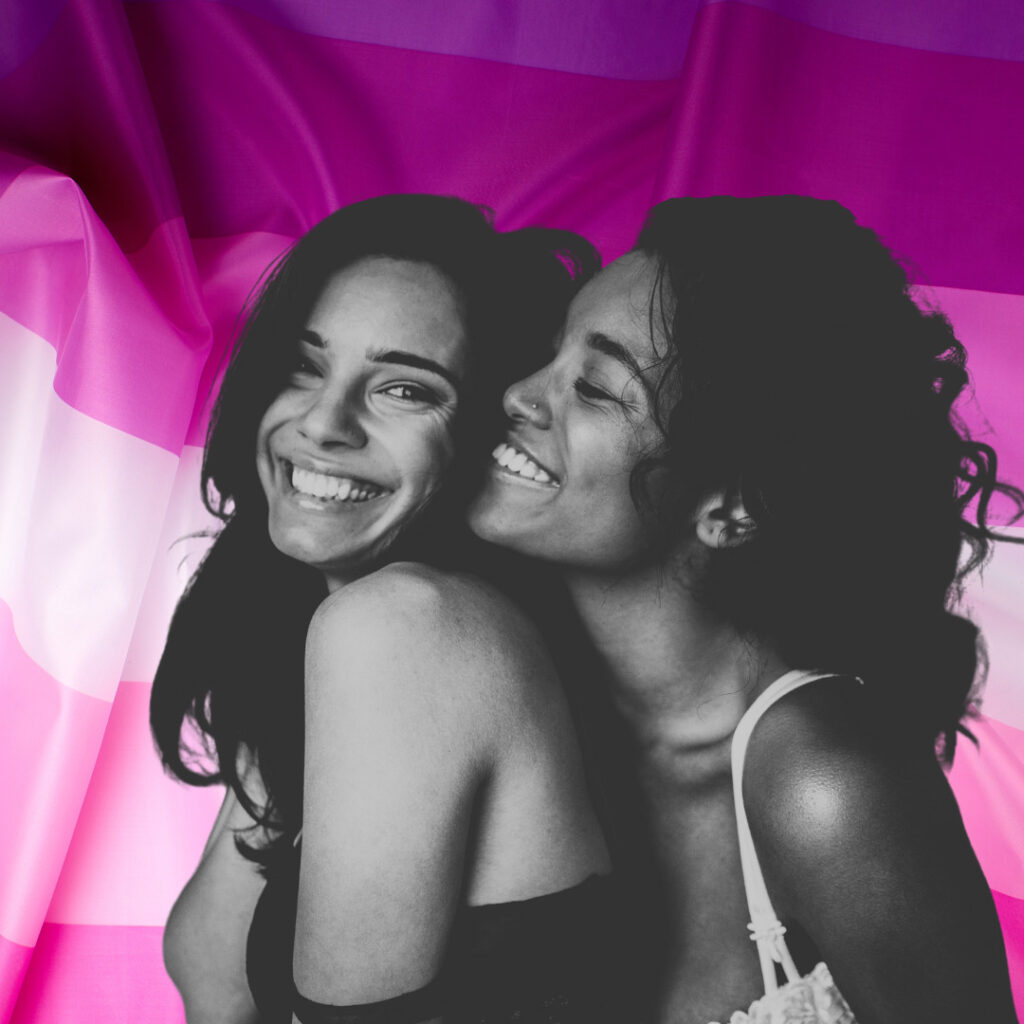At first glance, it may seem like the flags of the LGBTQ+ communities are ‘just flags’ but in reality, they are powerful symbols of solidarity and identity. All parts of the LGBTQ+ community have suffered in the past and are still overcoming prejudice and discrimination, so these flags represent support and pride within the community. You may be able to recognise more LGBTQ+ flags than you think, but did you know there have been multiple lesbian flags? Unfortunately, some past versions of the lesbian flag have had some not-so-positive origins which is why it’s important to learn which flag you want to have displayed in your room or which to use when supporting any lesbians you know.
1999
In 1999, the first lesbian flag was designed by a cis man names Sean Campbell. This flag features a labrys which is a double-headed axe and stemmed from mythological weaponry which was then taken as an empowering symbol for the lesbian feminist community in the 1970s. There are countless reasons as to why this flag was and continues to be problematic but one of the main issues comes from the black triangle used in the design. The black triangle was used by the Nazis in concentration camps to label people as ‘asocial’, which included lesbians.
2010
The next flag which you may recognise more than the first is the ‘lipstick lesbian’ flag. Again problematic, this flag was designed by Natalie McCray in 2010 and has seven pink stripes with a pink lipstick print in the top left corner. Although an often widely used flag, this is commonly rejected by lesbians due to McCray posting racist, transphobic, and biphobic comments on their old blog. Not only that, but many feel that the ‘lipstick lesbian’ flag excludes butch and non-binary lesbians, or simply lesbians that don’t identify with the ‘lipstick lesbian’ term.
Following this came the ‘pink’ flag which is essentially the ‘lipstick lesbian’ flag design with the kiss mark removed and this has been used more widely although many people still feel it is ultimately exclusionary.
2018
In recent years, Emily Gwen introduced the ‘orange-pink’ lesbian flag through their Tumblr in 2018. Another seven-band flag, Gwen’s design features colours ranging from dark orange to dark pink to symbolise aspects of the lesbian experience. Dark orange represents gender non-conformity, orange is for independence, light orange is for community, the central white highlights unique relationships to womanhood, pink is for serenity and peace, dark pink is for love and sex, and the darkest and final stripe is for femininity.
At present, it seems that Gwen’s seven-stripe design is the most widely accepted by the lesbian community as it encompasses important features of the lesbian experience that other flags have ignored, such as including transwomen and non-binary people who identify as lesbians. Inspired by Gwen’s flag, a five-stripe flag using the same colour scheme has been developed which maintains the original message and is the first result when you search ‘lesbian flag’ on Google.
